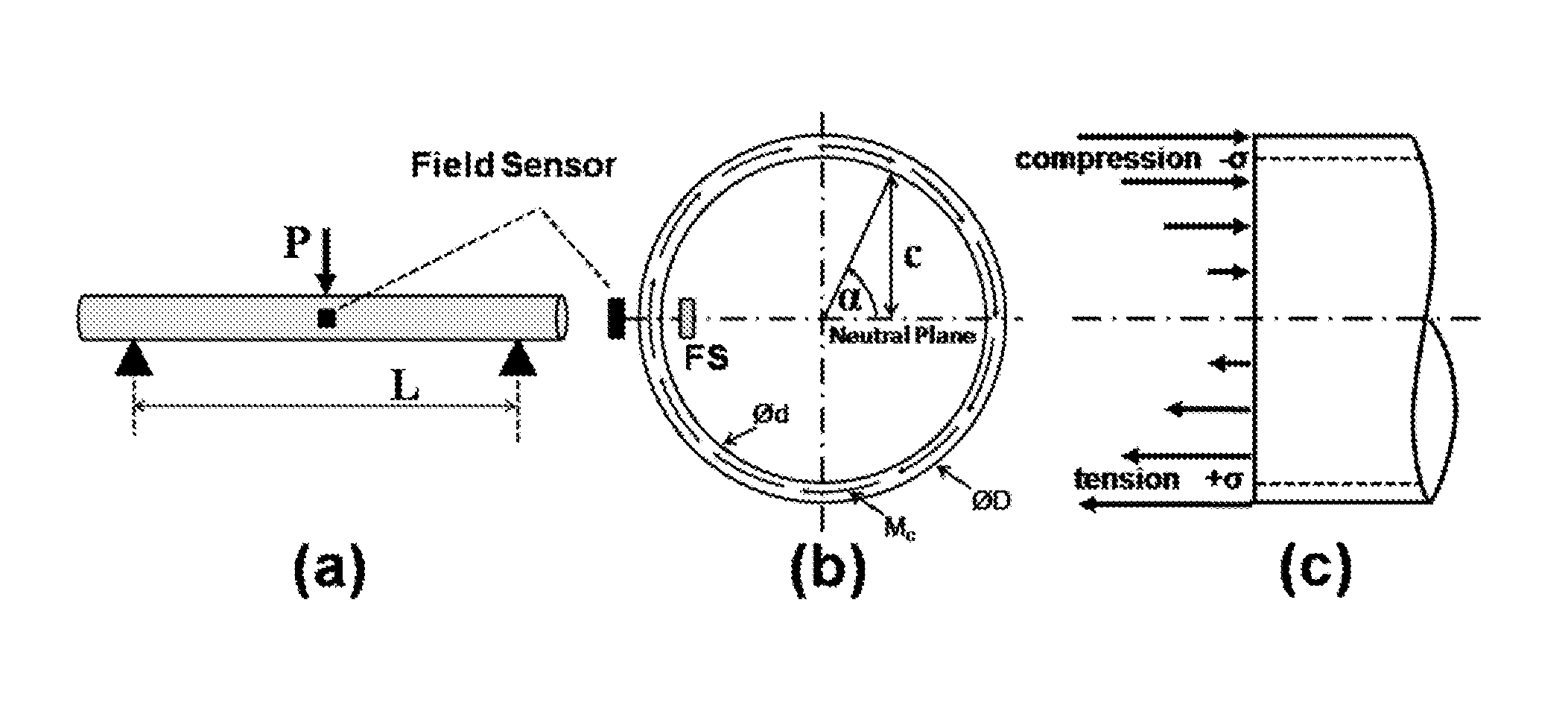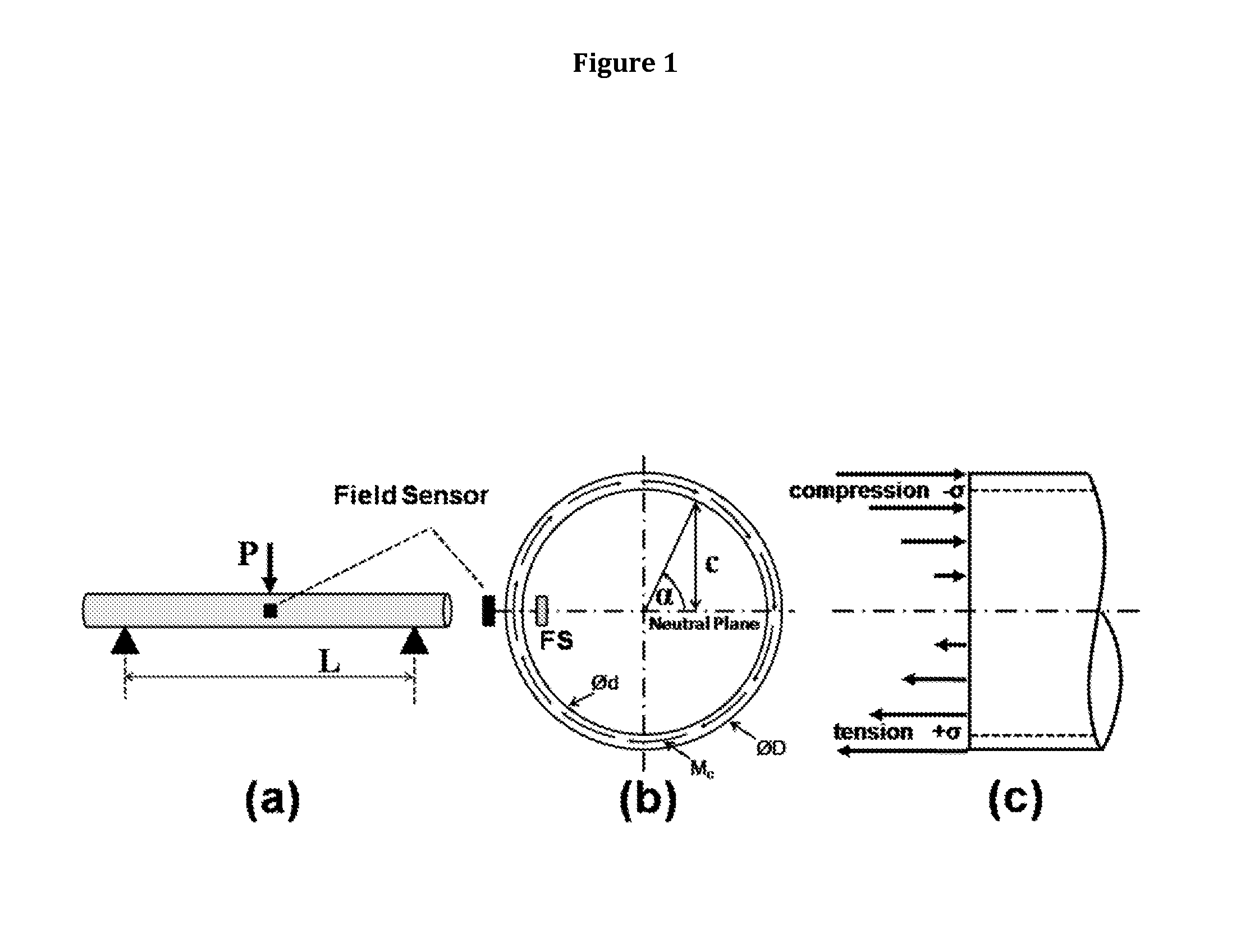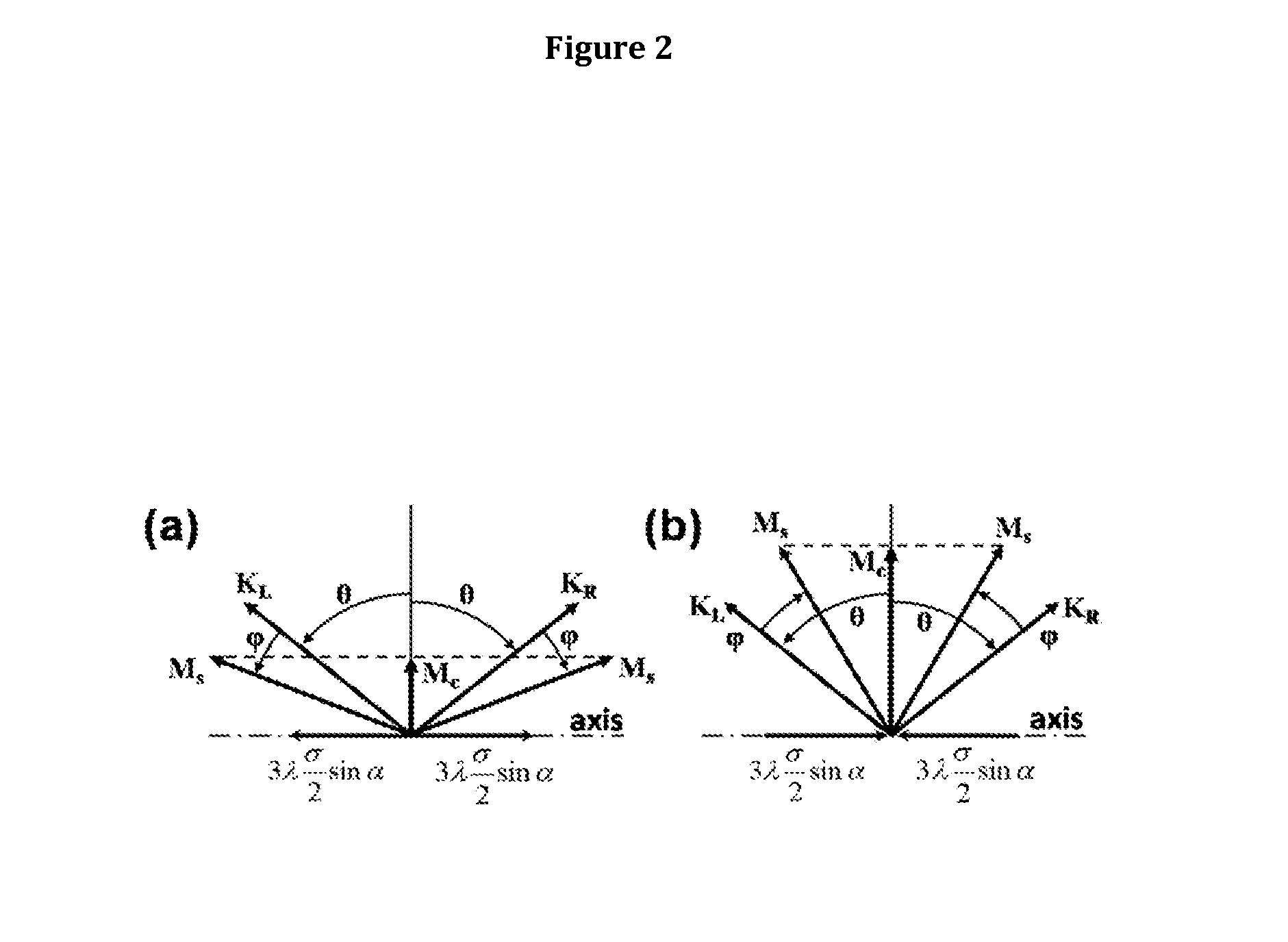Magnetoelastic force sensors, transducers, methods, and systems for assessing bending stress
a technology of magnetic force and sensors, applied in the field of magnetic force sensors, can solve problems such as affecting the accuracy of ultimate sensors
- Summary
- Abstract
- Description
- Claims
- Application Information
AI Technical Summary
Benefits of technology
Problems solved by technology
Method used
Image
Examples
Embodiment Construction
A. Theory
[0028]For the member, shown as a beam in FIG. 1(a), resting on two supports, distance L apart, the bending moment B, at the midpoint where P is applied, is found as B=PL / 4. Equilibrium demands that B at any location be resisted by the moment of the longitudinal (i.e., “normal”) stresses within the beam material and that the net force from such stresses be zero. These requirements are met in beams with cross sections having mirror image symmetry about a center line normal to both P and L, e.g., round tubular cross sections, by the symmetrical distribution of tensile (+ψ) and compressive (−ψ) stresses indicated in FIG. 1(c). The stress magnitude at distance c (FIG. 1(b)) from the beam's central plane (the “neutral axis”) is found as4: ψ=Bc / I, where I is the moment of inertia of the cross section about its diameter. For a tubular section with outside diameter D and inside diameter d, I=π (D4−d4) / 64. For a thin tube, wherein D≈d, c may be expressed with adequate precision in te...
PUM
| Property | Measurement | Unit |
|---|---|---|
| force | aaaaa | aaaaa |
| bending stress | aaaaa | aaaaa |
| voltage | aaaaa | aaaaa |
Abstract
Description
Claims
Application Information
 Login to View More
Login to View More - R&D
- Intellectual Property
- Life Sciences
- Materials
- Tech Scout
- Unparalleled Data Quality
- Higher Quality Content
- 60% Fewer Hallucinations
Browse by: Latest US Patents, China's latest patents, Technical Efficacy Thesaurus, Application Domain, Technology Topic, Popular Technical Reports.
© 2025 PatSnap. All rights reserved.Legal|Privacy policy|Modern Slavery Act Transparency Statement|Sitemap|About US| Contact US: help@patsnap.com



